The end of summer marks the conclusion of the Turtle Conservancy’s 2023 Southern Pacific Pond Turtle field season. This was our second year researching and monitoring two populations of Southern Pacific Pond Turtle’s (Actinemys pallida) in Ventura County. Our endeavors are underpinned by shared concerns among biologists across California, who recognize the precarious state of this species.
Our work focuses on two distinct sites in the same local river drainage. One lies within a human-altered wetland in the Santa Clara River floodplain near Fillmore, CA, while the other resides in the upper reaches of a montane stream of Los Padres National Forest..
In May we set out to see if turtles encountered last year still occupied our research sites after the unprecedented rainfall and subsequent floods of the past winter. We spent the spring scouting turtle habitat that had been transformed by the floods, and waited for the water levels to subside.
When the seasonal “June Gloom” (occurring this year in May) eventually gave way to sunny, turtle-friendly weather we headed to the field in Fillmore. The sprawling wetlands were wider, deeper, and flowing faster than the previous year which presented a challenge to our survey methods. We had to double our efforts to sample additional water bodies which did not exist last year, but were excited to find out how turtles might be moving throughout the site. Results were a little perplexing this time around and we will need to keep up our work year after year to understand this turtle population that is hanging on in an oasis surrounded by residential and agricultural development and plagued with an alarming density of invasive species.
We are grateful for the collaboration that galvanizes the research in Fillmore and must acknowledge the amazing work of our partners at the Santa Clara River Conservancy, UCSB, and the California Department of Fish and Wildlife working to reverse the damage that humans have done to this area for decades.
At our other study site in Los Padres National Forest, the water level and flow of the stream was too high to safely survey in the spring, so we waited patiently for conditions to ease. Finally, in July, we packed our gear and hiked into the site for a month-long survey power session with a dedicated team of summer interns and field technicians. Winter rain had washed out the road (or piled boulders on top of it) so public access was restricted. Limited human disturbance presented a unique opportunity for the team to monitor the turtles and other wildlife of the Sespe Wilderness.
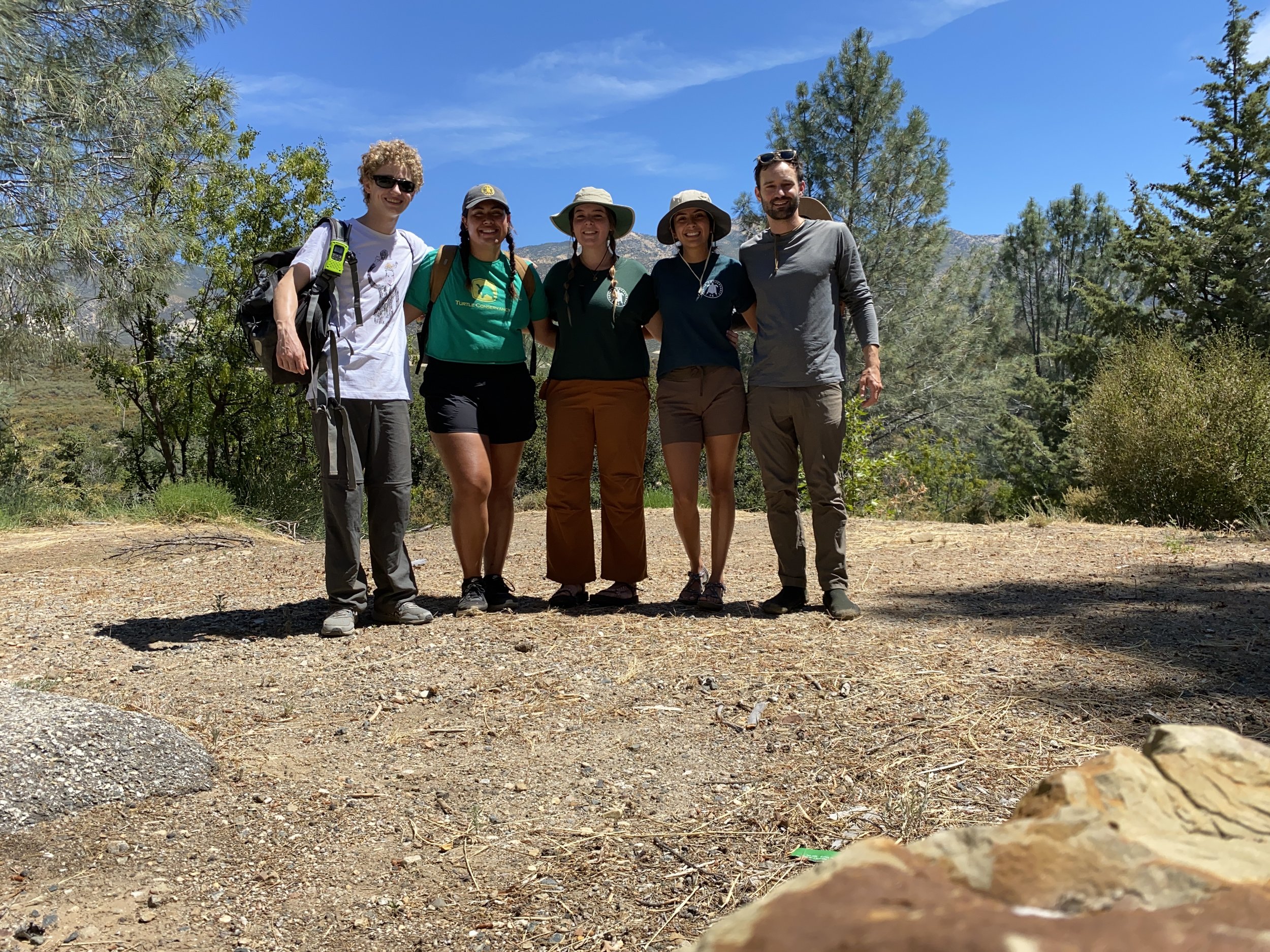

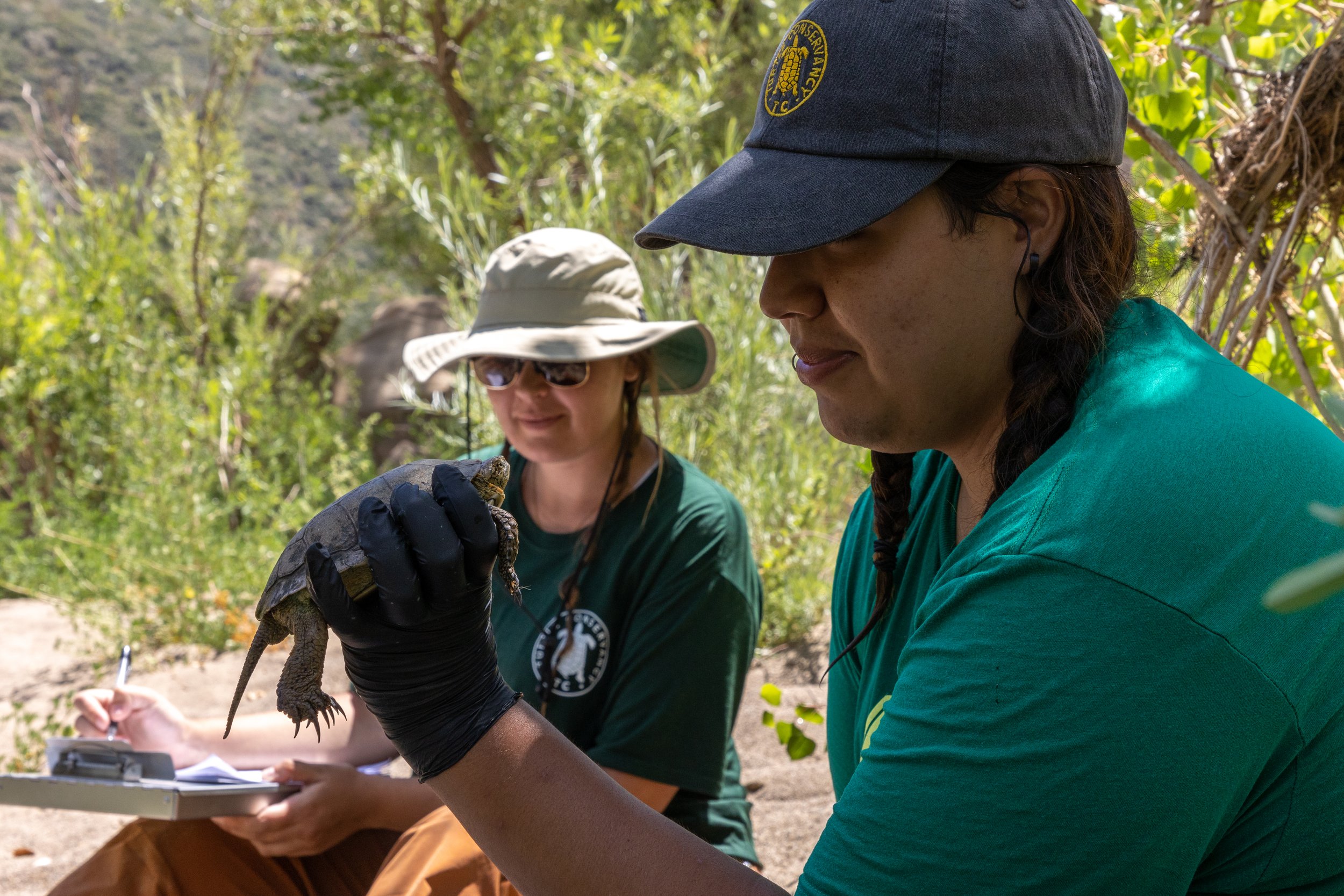
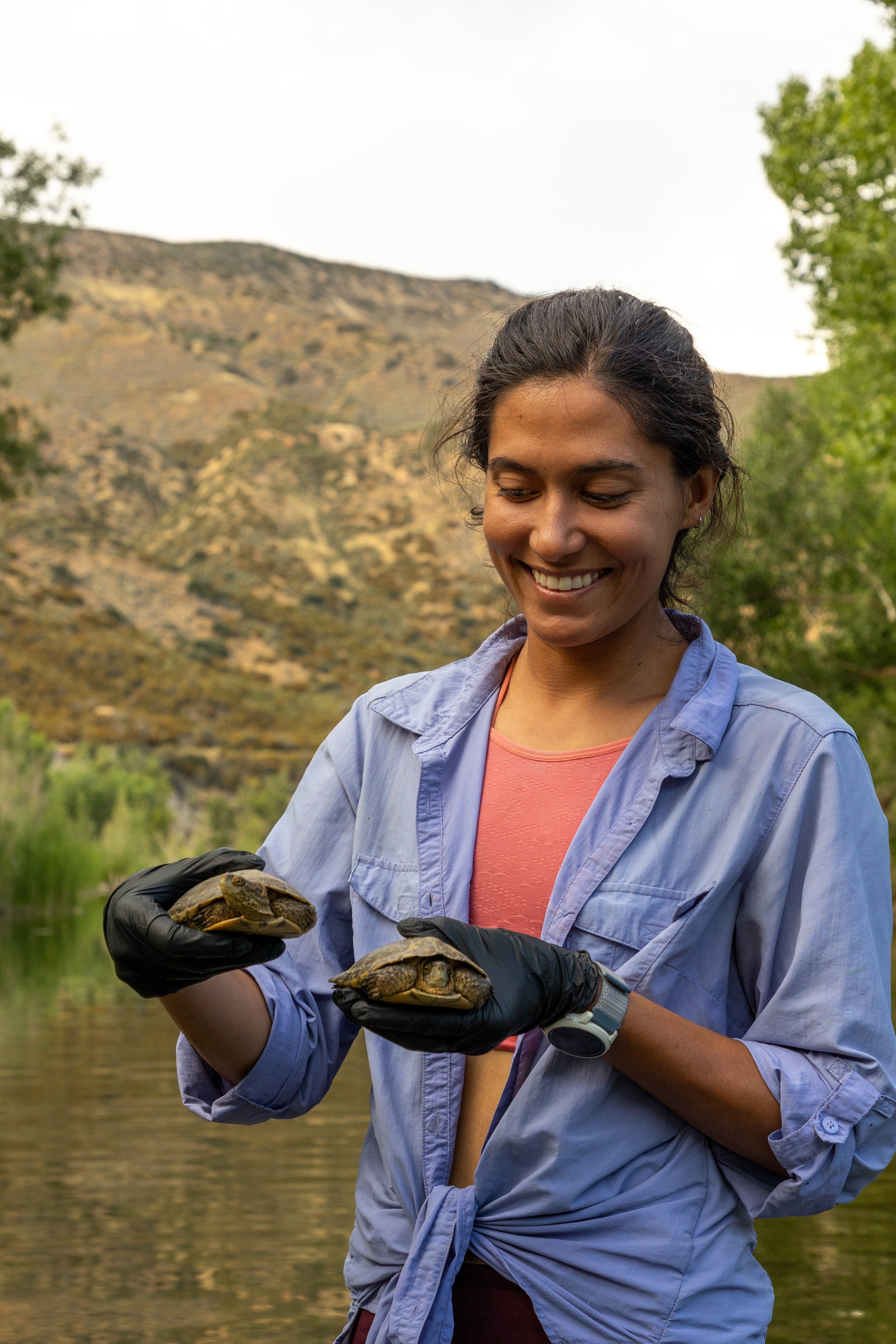
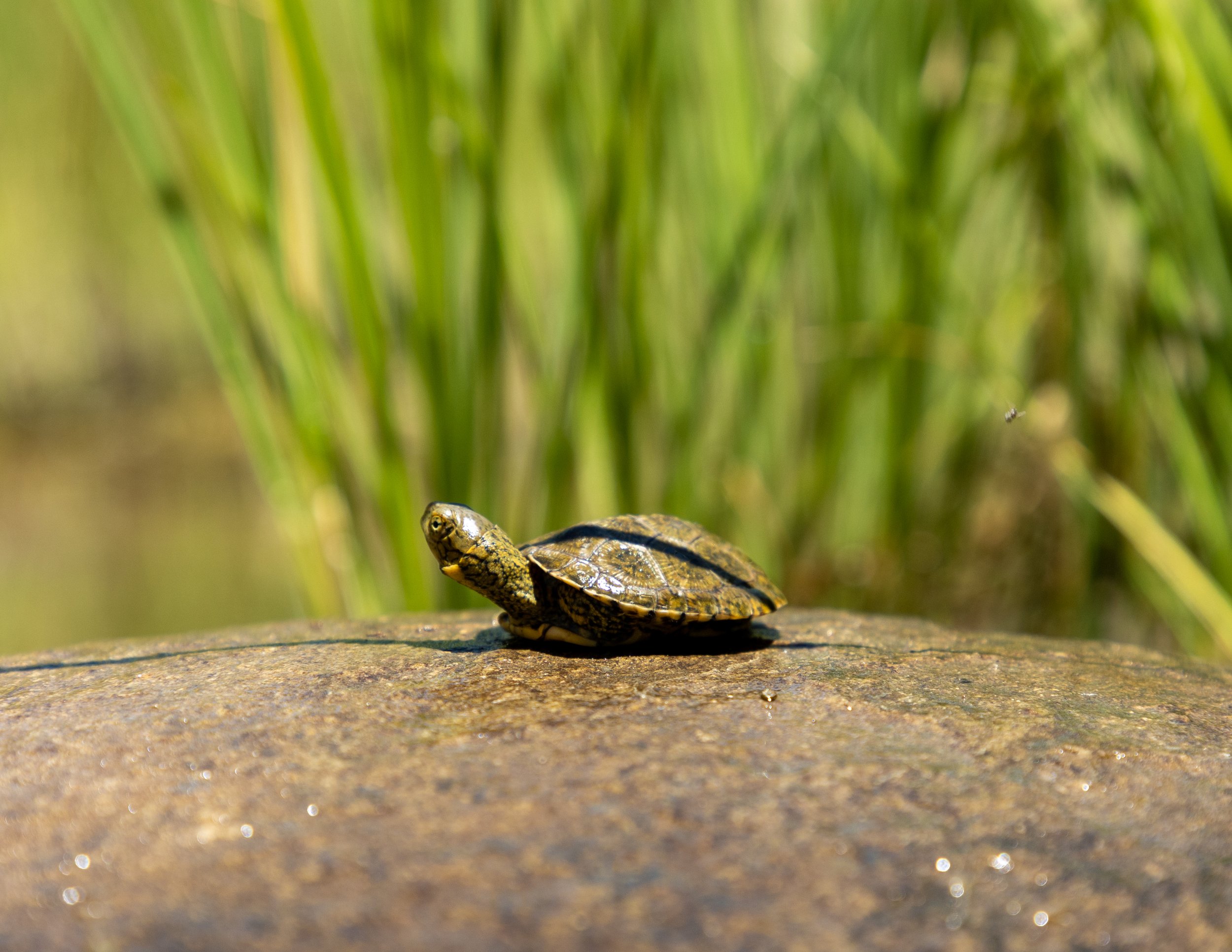
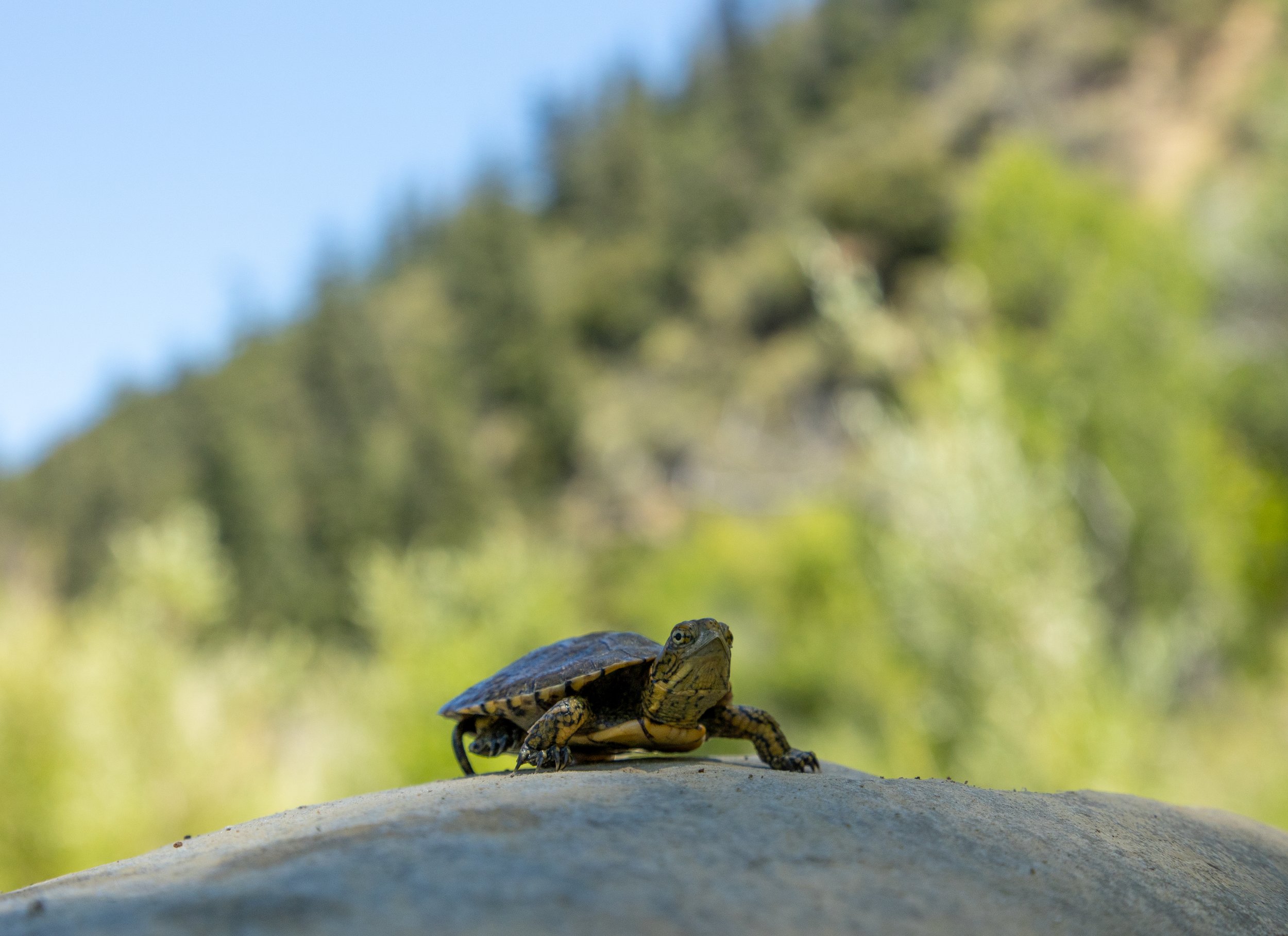
We were excited to see many of the same turtles encountered last year, as well as juveniles and hatchlings that were able to avoid the winter floodwaters by moving upland. Picture your favorite summer swimming hole but with frigid water 15 feet higher and flowing so fast it knocks boulders downstream. These turtles, thankfully, knew to get out of the way. In comparison to other dwindling populations in the region, we are cautiously optimistic that this population of Southern Pacific Pond Turtles remains a stronghold.
The empty trails also gave us a peek into the activity of the mammalian carnivores native to the wilderness adjacent to Southern Pacific Pond Turtle habitat. We frequently found tracks and scat piles from bears, mountain lions, and coyotes. Variations in track sizes hinted at the presence of a mother bear and her cub, while feline tracks suggested the presence that mountain lions walked the same path as our crew as we hiked out at the end of the day. Though we did not have the fortune of sighting these elusive creatures, our interns learned how to preserve the evidence of this activity by plaster casting the molds of these tracks.
(Mountain) lions, bears, and turtles, oh my!
All in all, our second year of monitoring Southern Pacific Pond Turtles in Ventura County can be considered a massive success. We are well on our way to understanding the population dynamics of the native turtles in these two distinctly different habitats and hope to eventually understand if this species will be able to persist despite the odds. Populations throughout southern California are declining at an alarming rate and our study sites echo many of the threats that are driving turtle populations towards collapse. Alien species including crayfish, catfish, bullfrogs, and african clawed frogs are sometimes far more numerous than the native turtles, and the increasing frequency of floods, drought, and fires will test the limits of their resilience. Regular surveying is essential to assess the population and procure conservation measures to ensure the survival of Ventura County’s only native turtle.
The Turtle Conservancy takes pride in its partnership with Thacher School, offering hand-on educational opportunities to high school students and recent graduates. This work would not be possible without the support of the Shanbrom Family Foundation.



